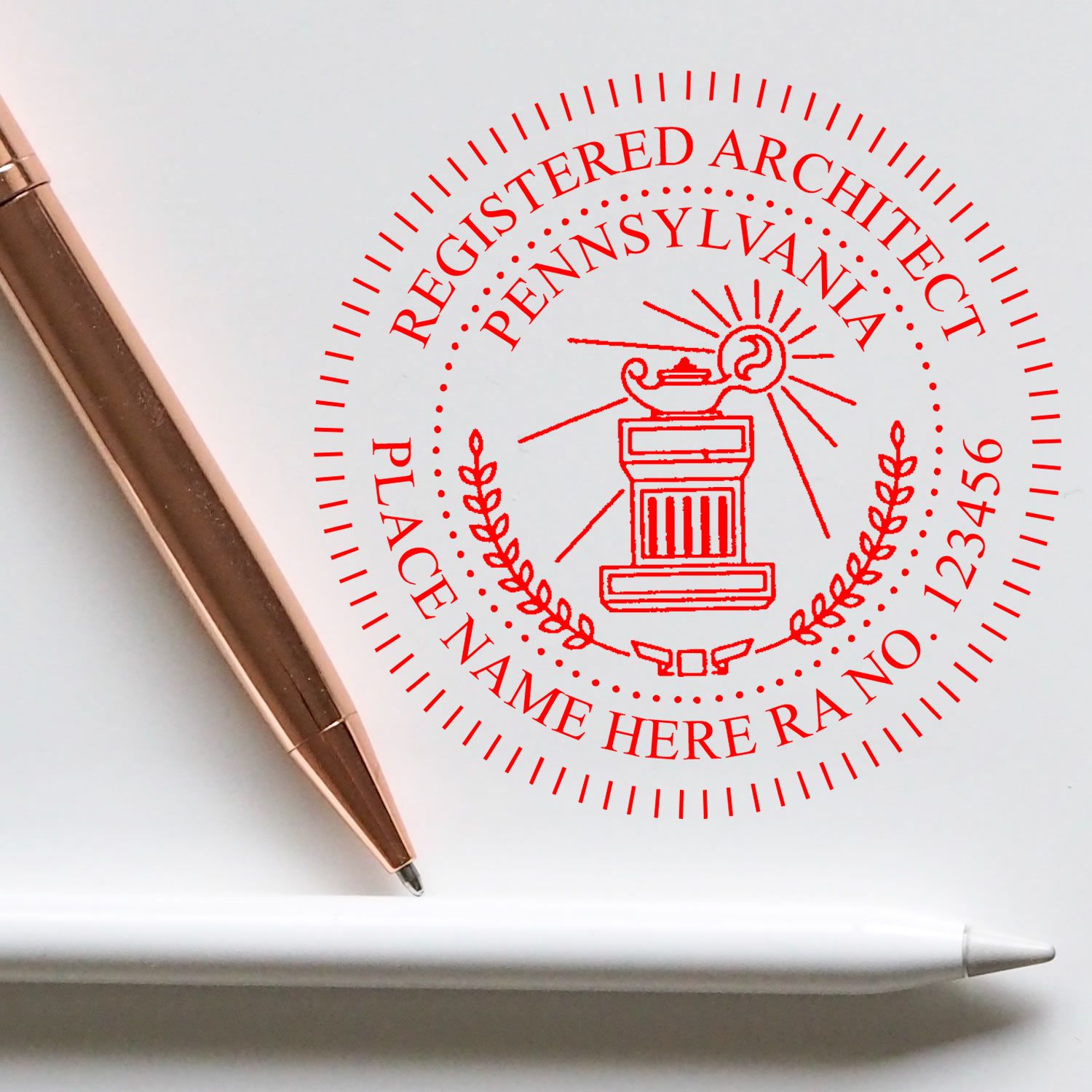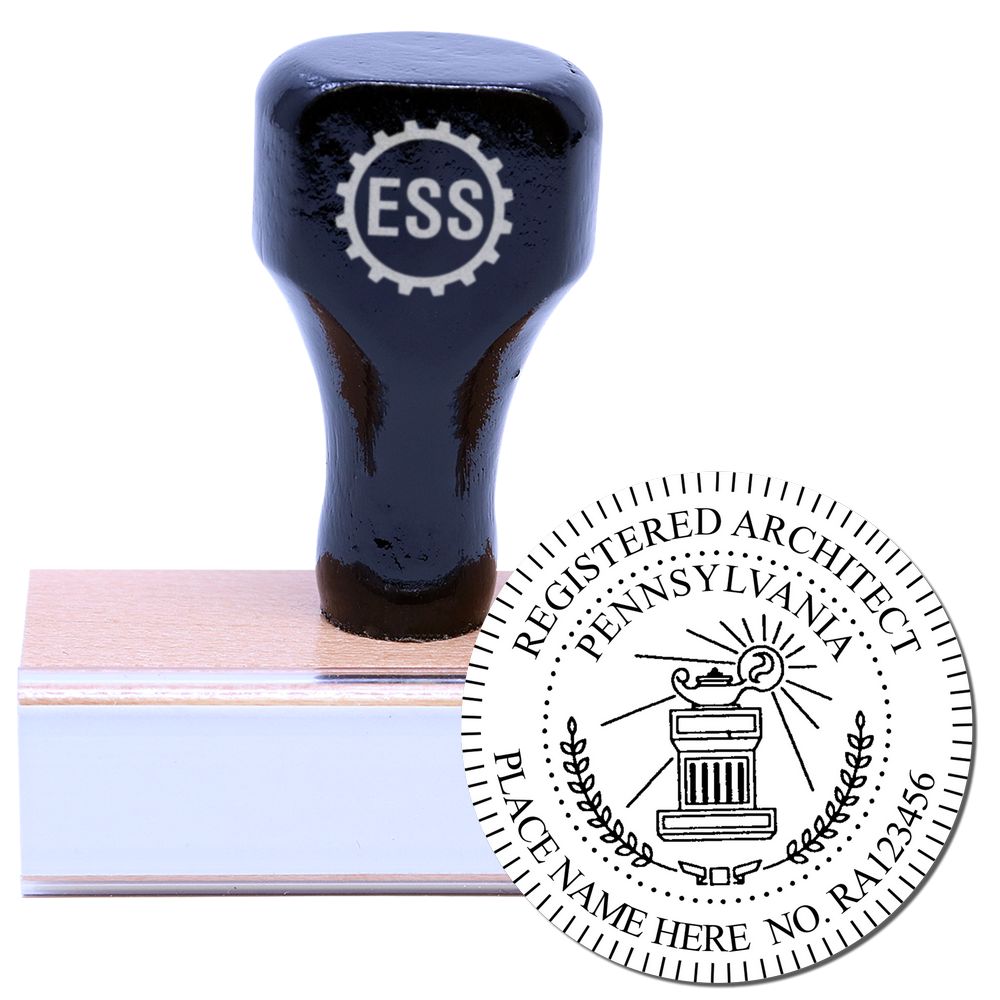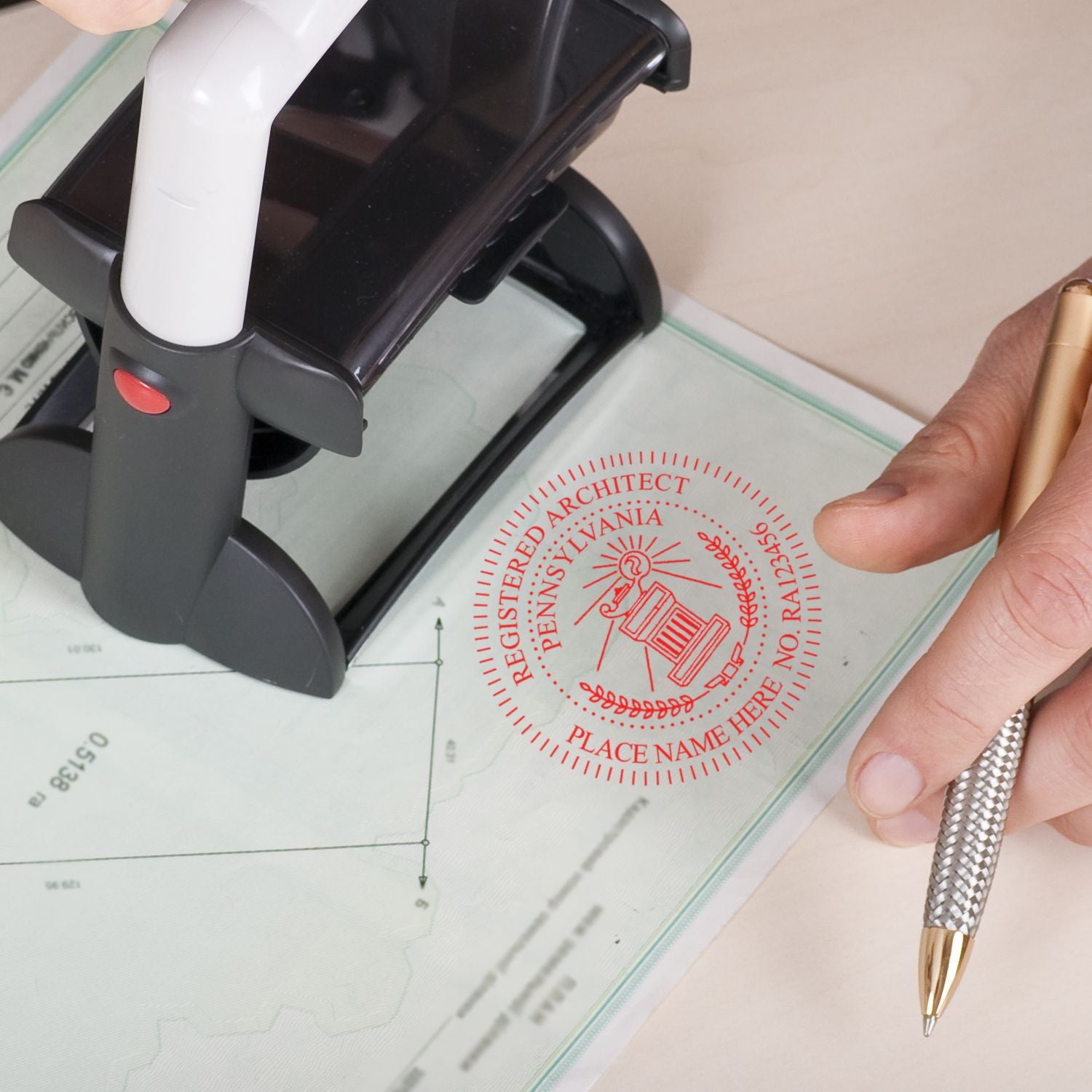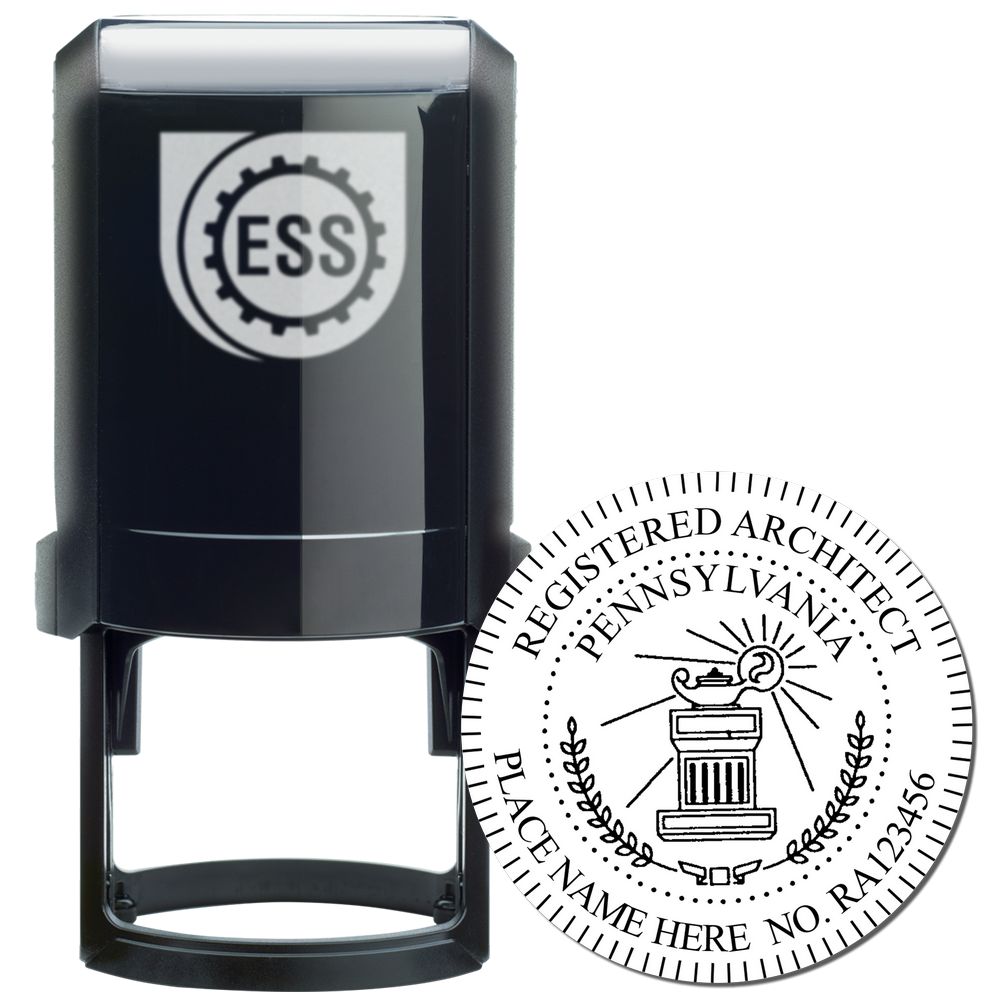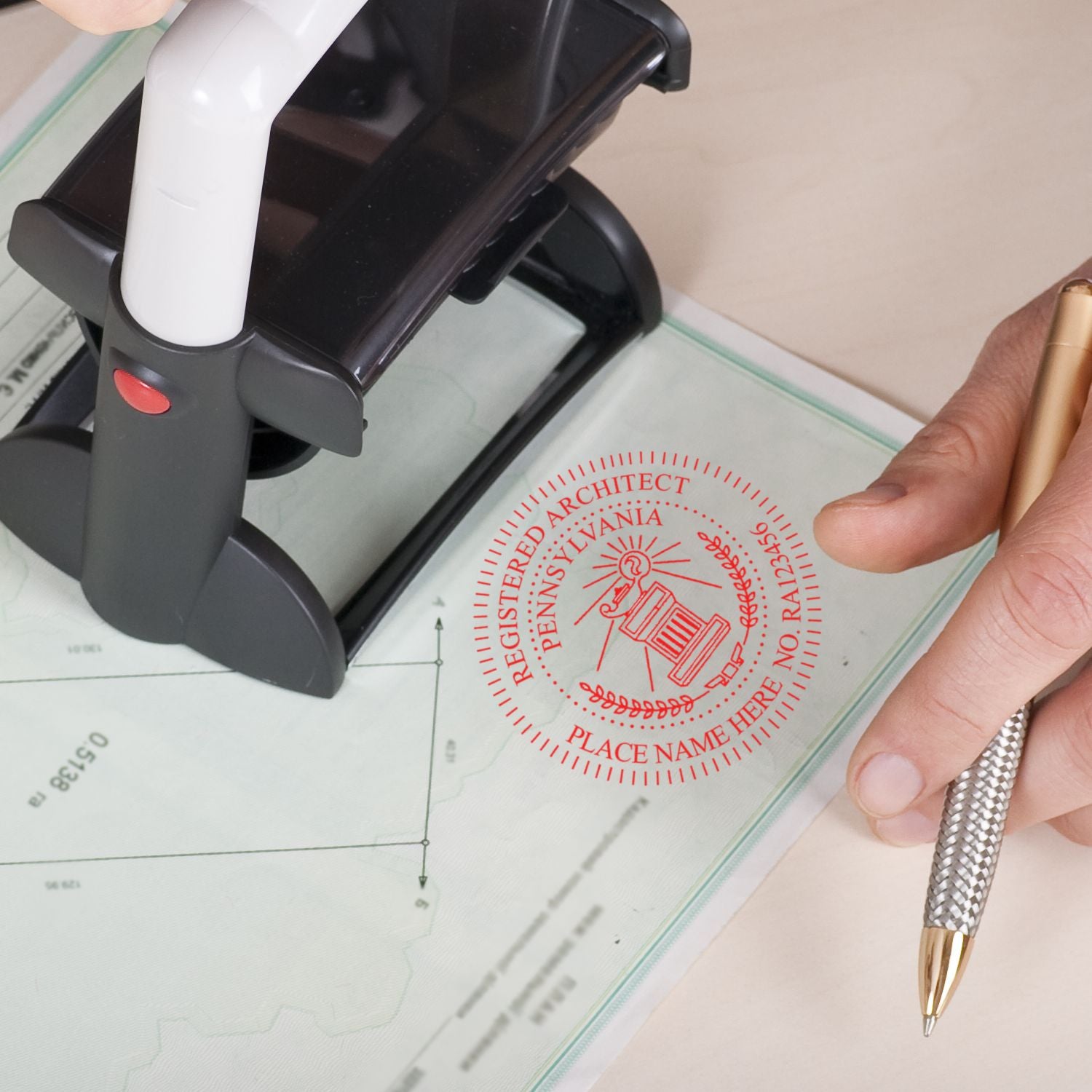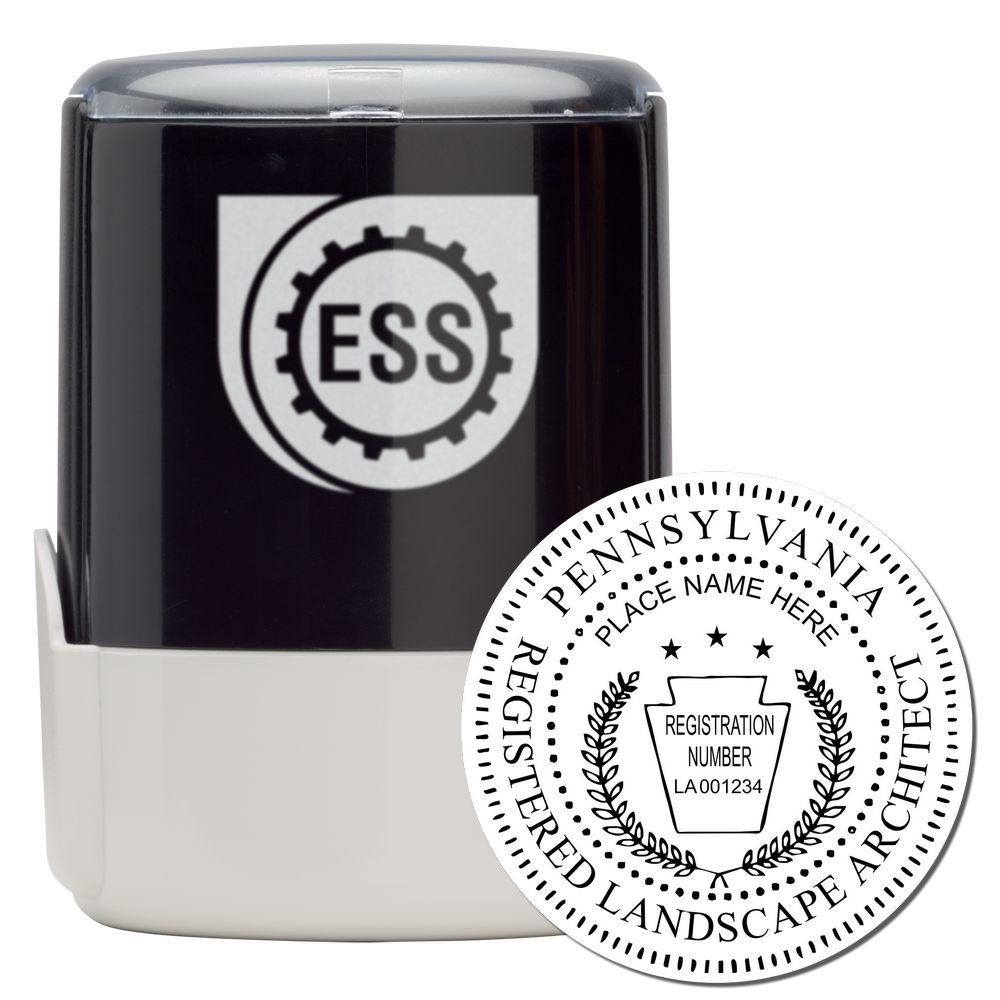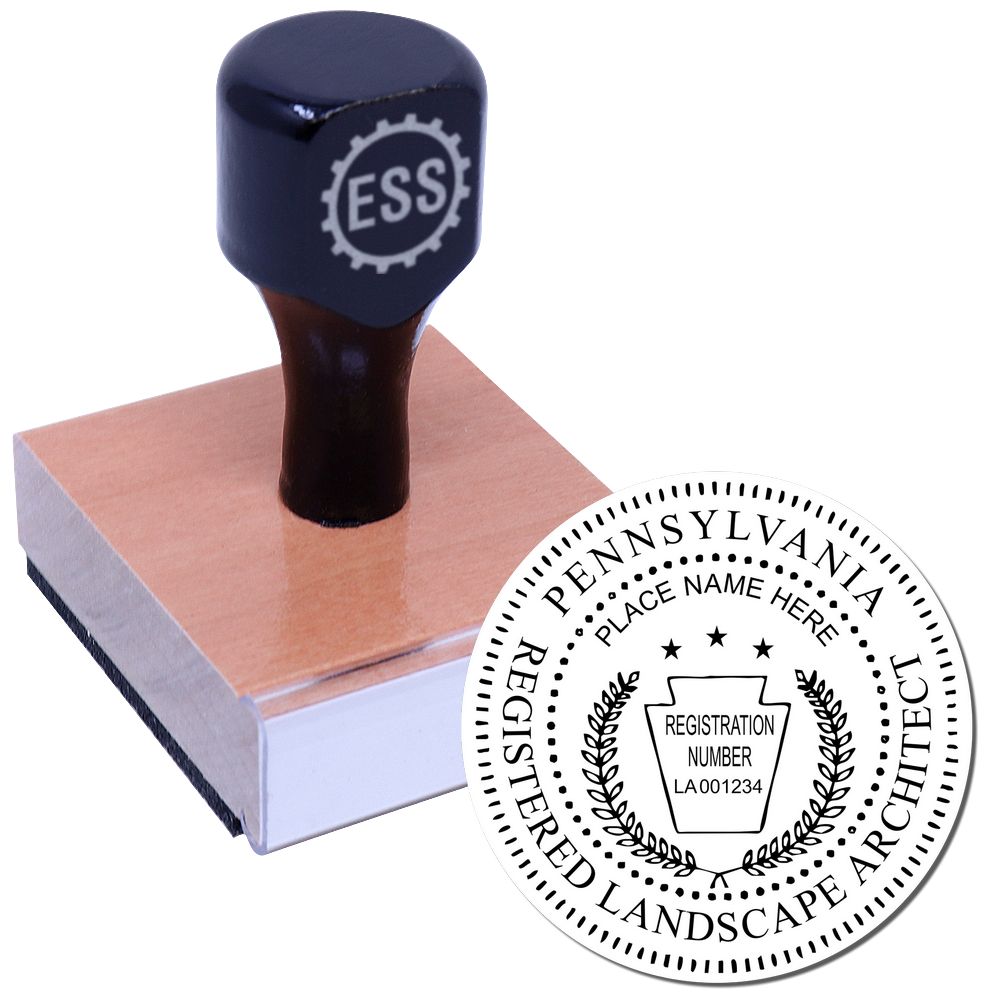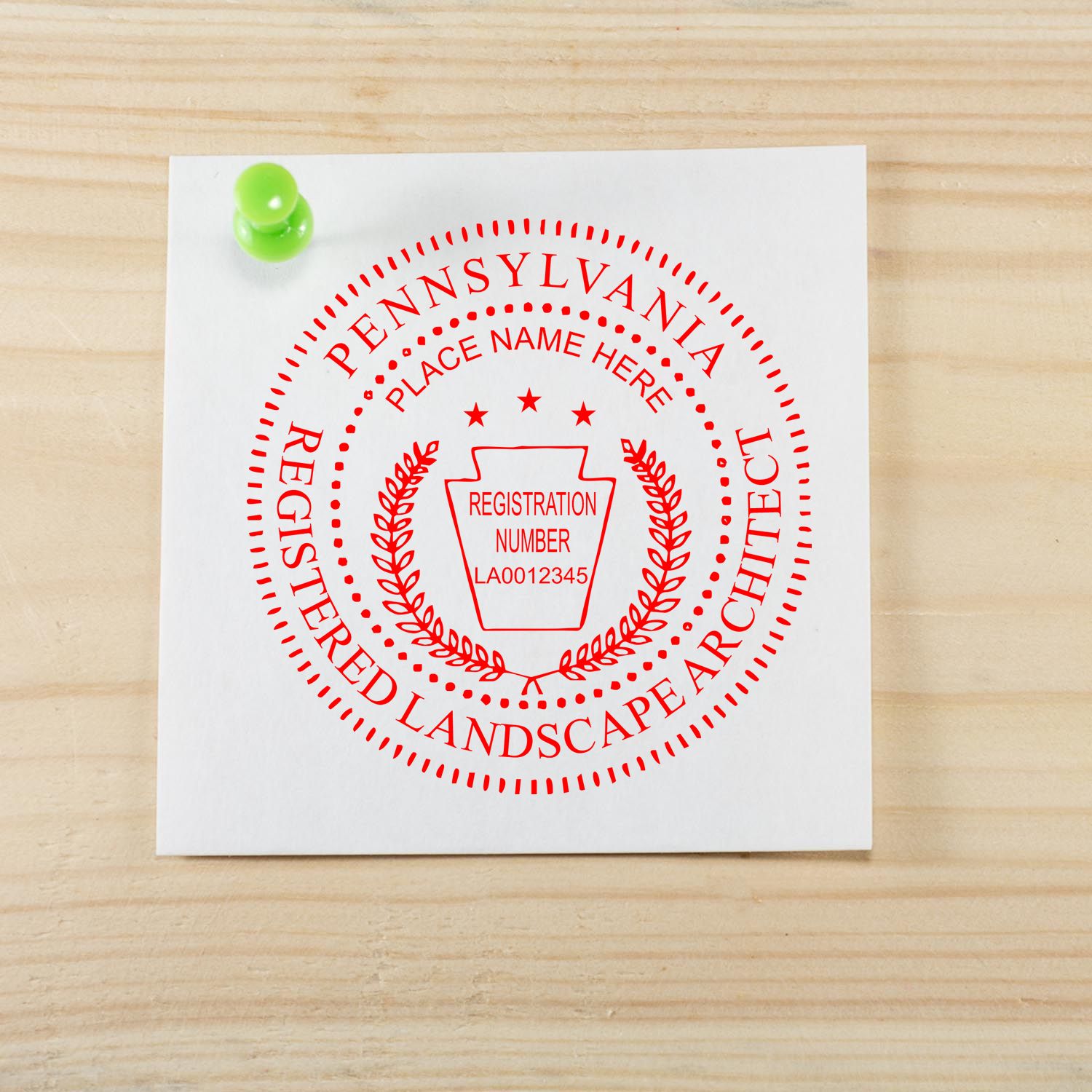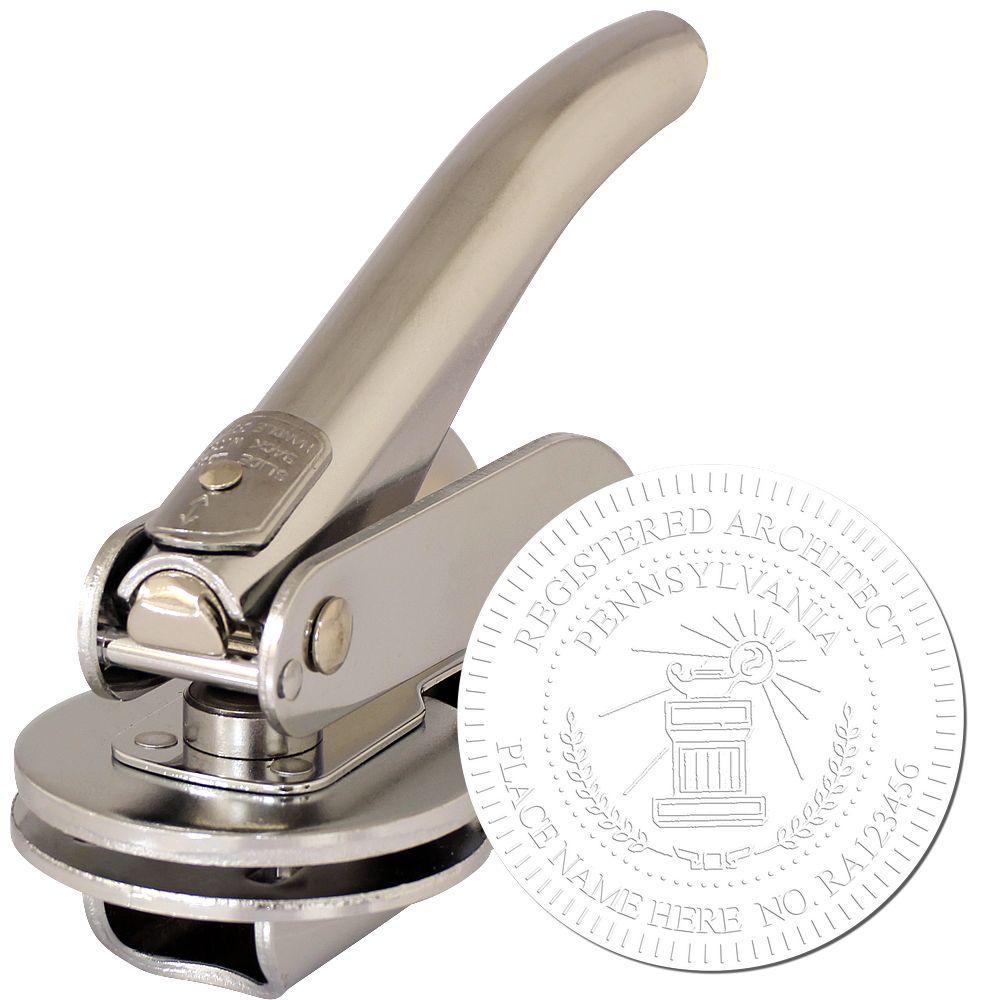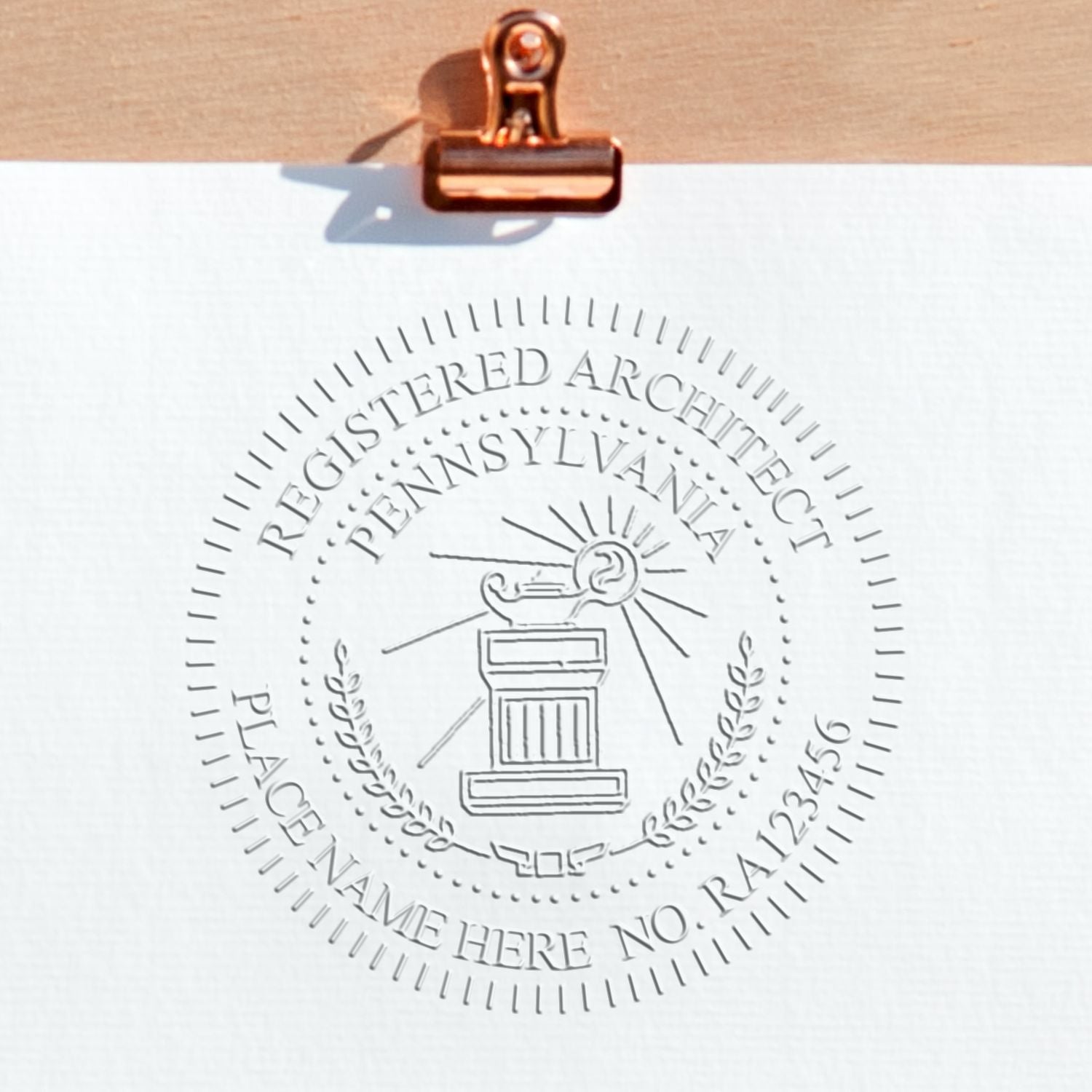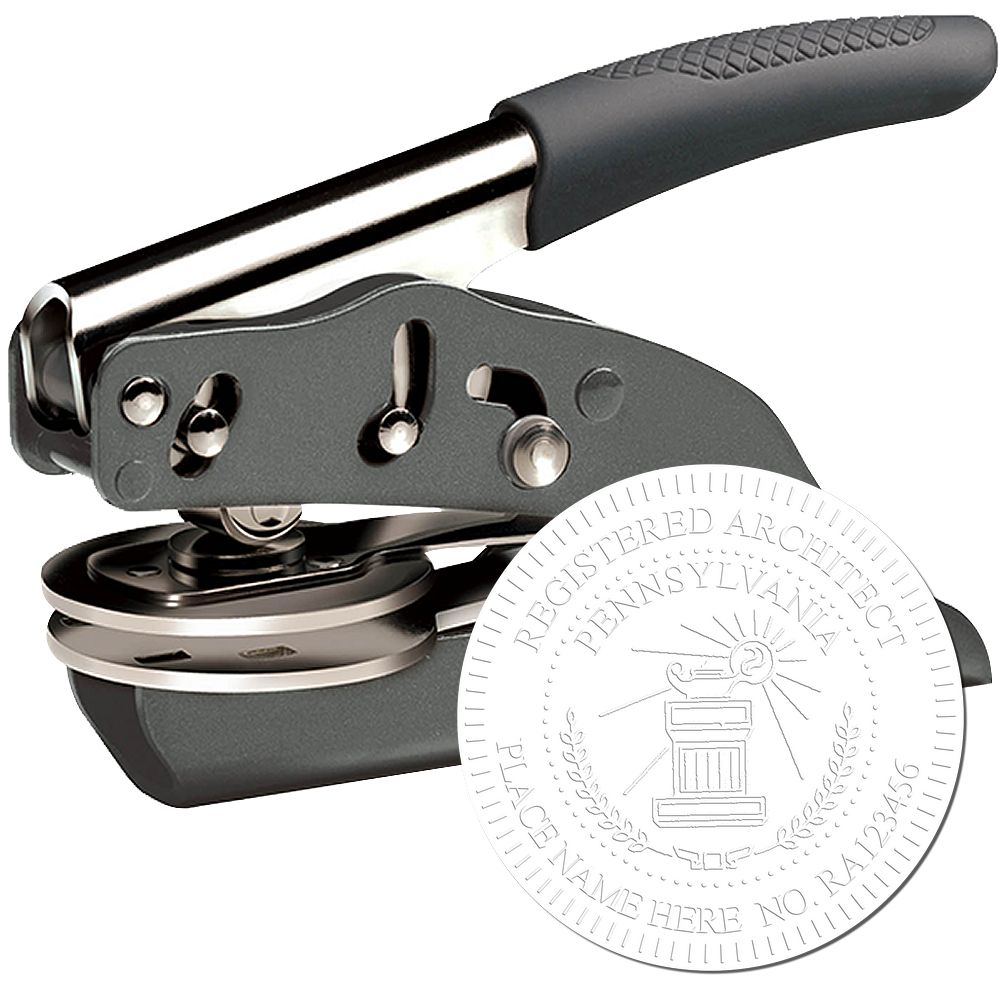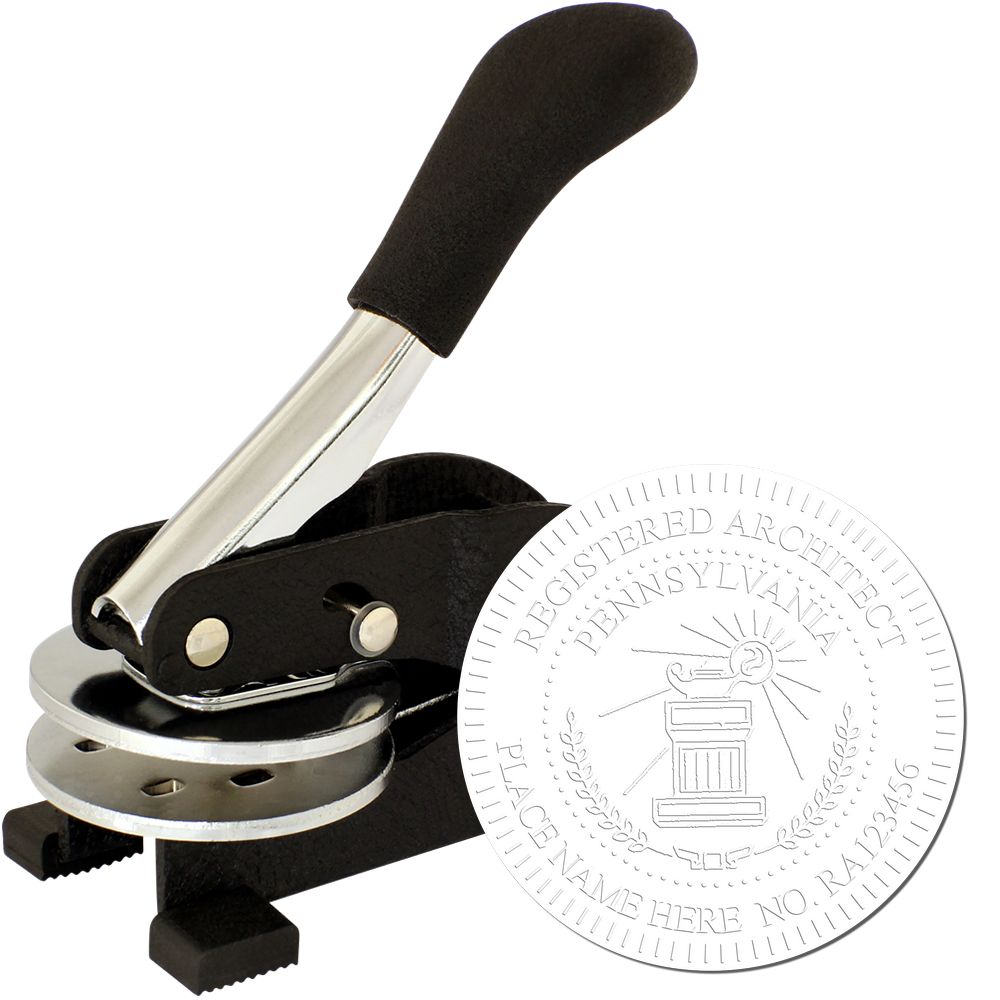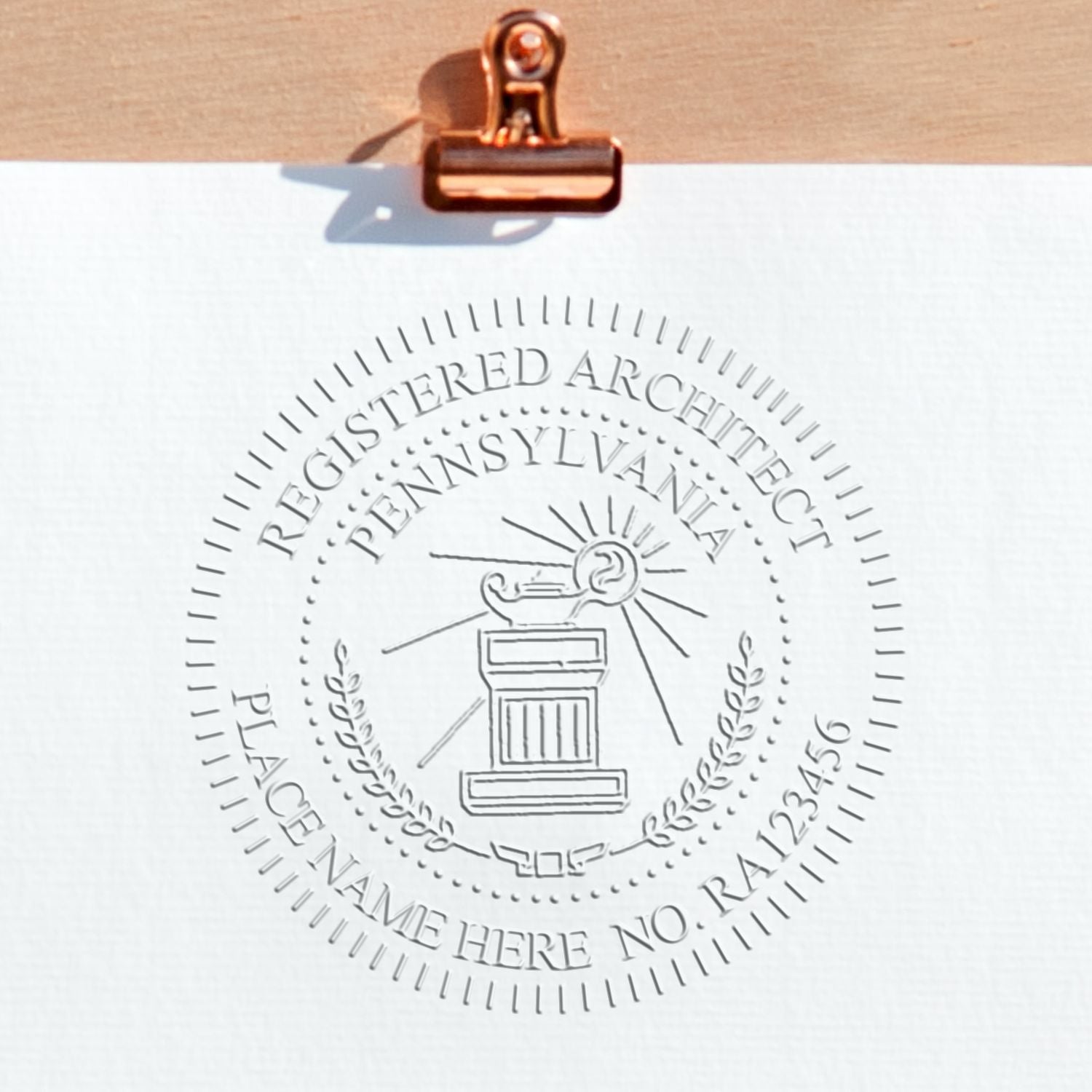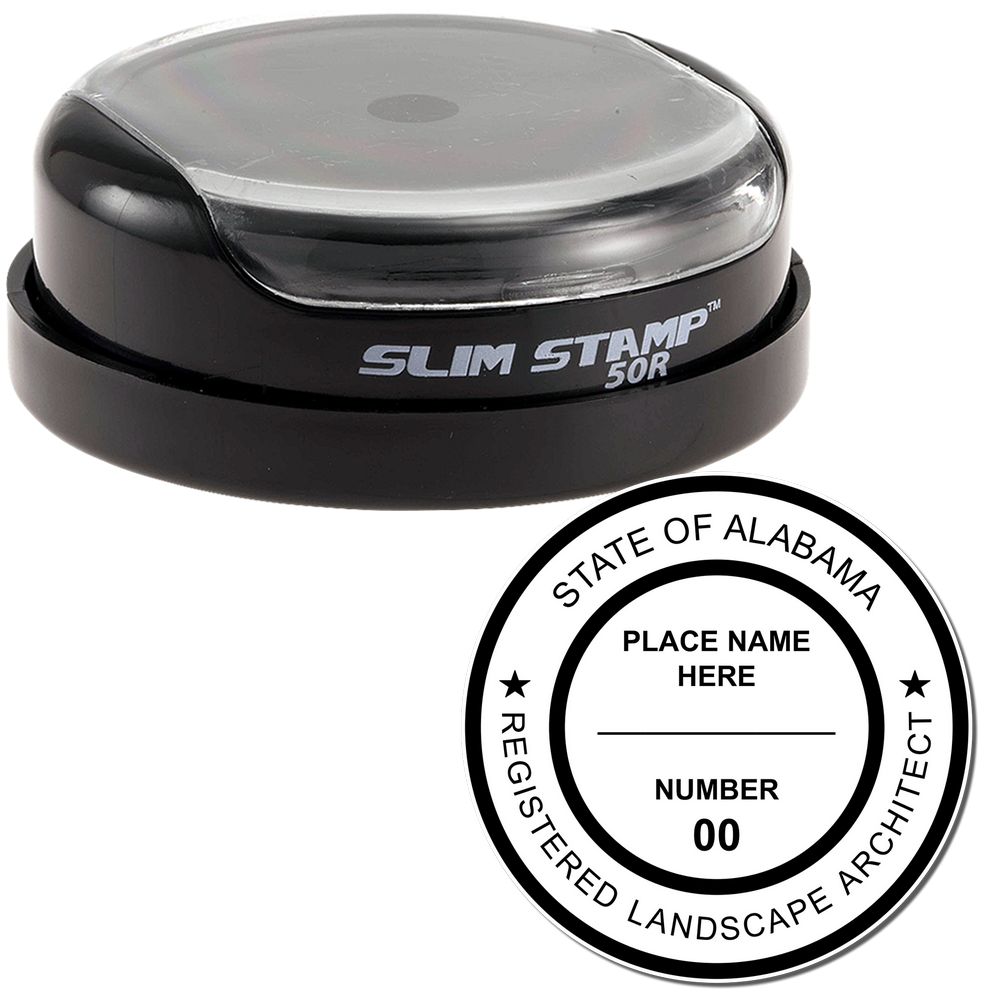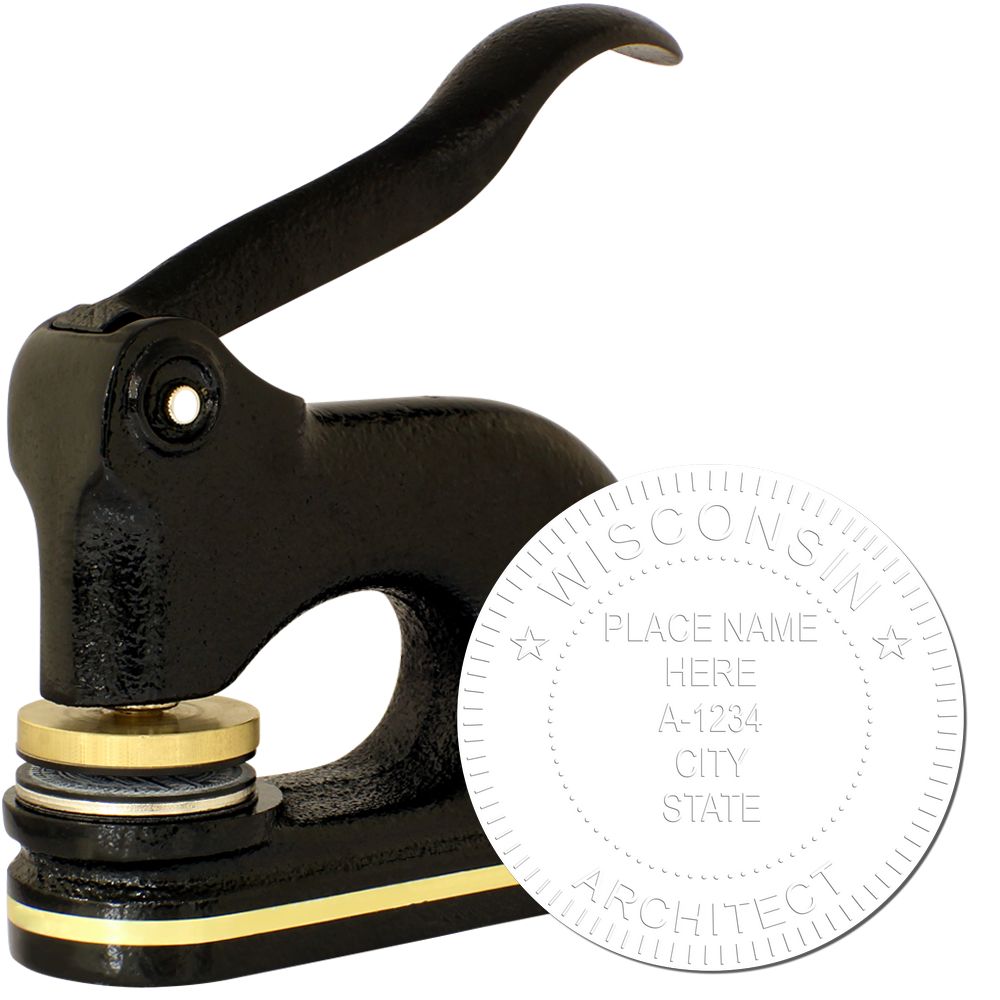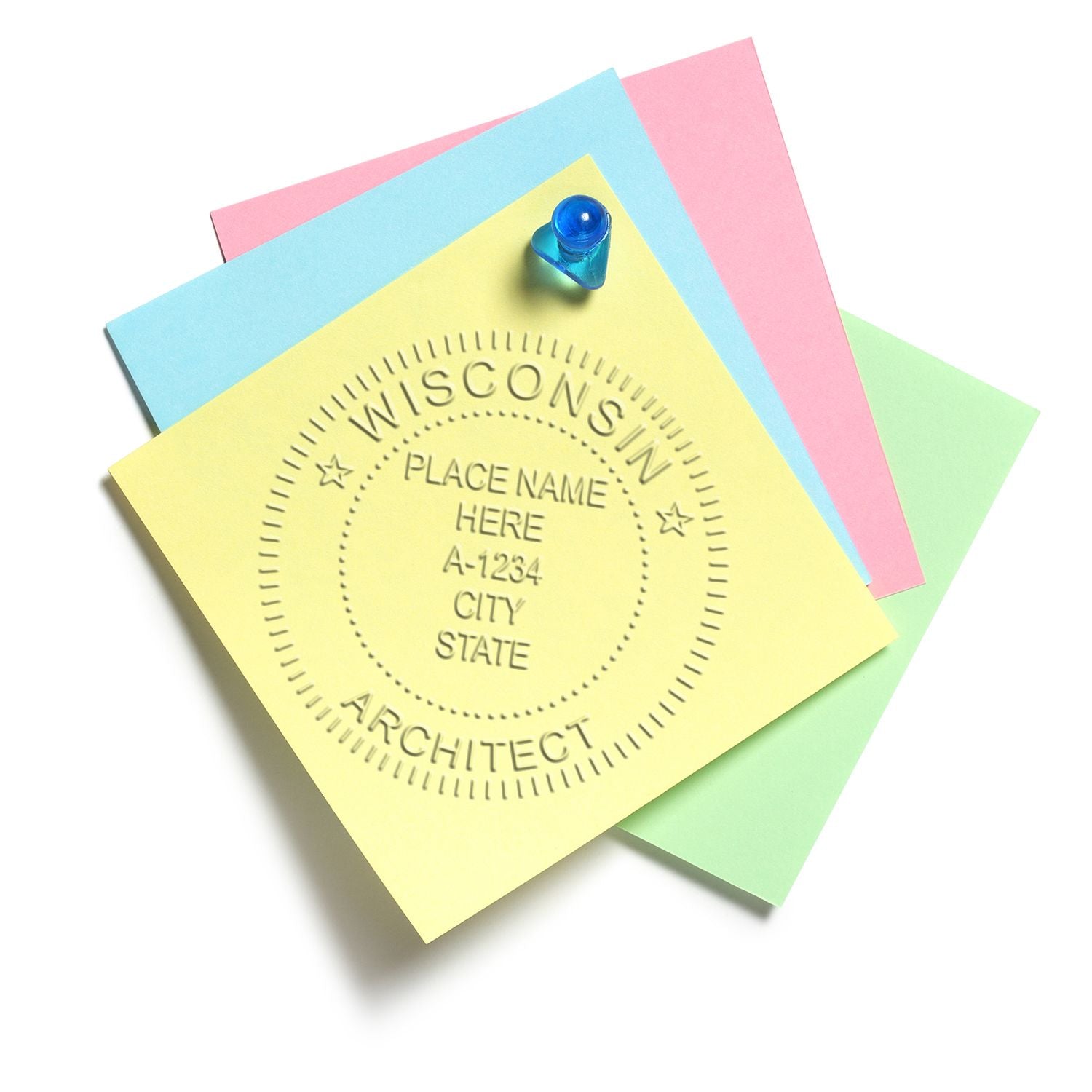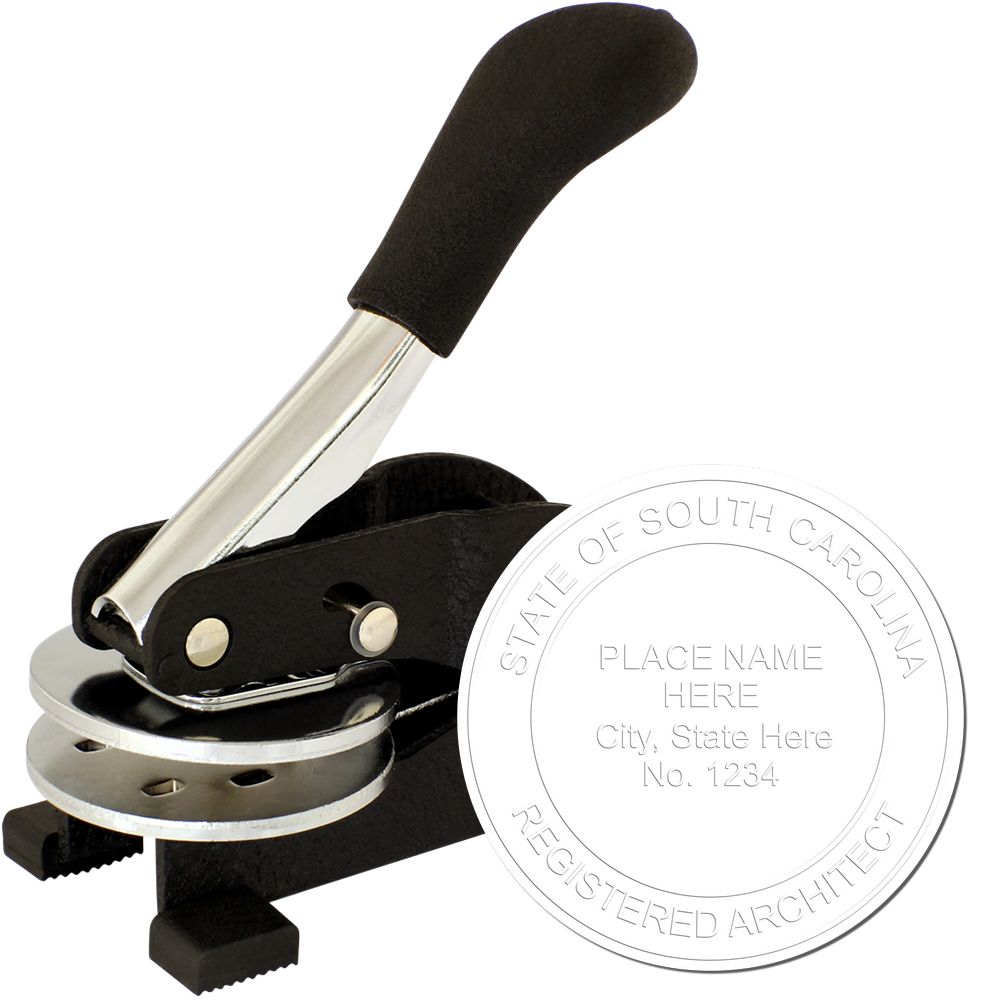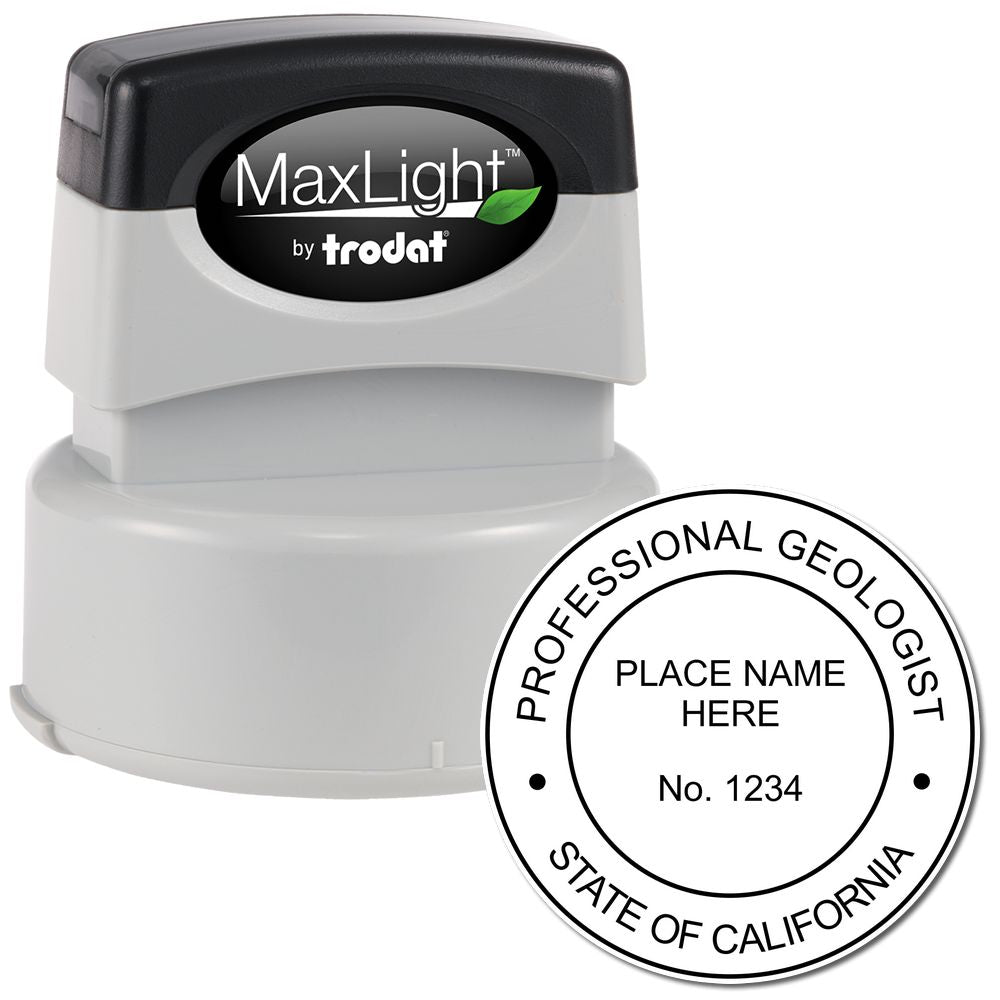The Significance of the Pennsylvania Architect Seal
In the field of architecture, the Pennsylvania architect seal holds significant importance. Understanding the purpose of this seal and the legal requirements associated with it is crucial for architects practicing in Pennsylvania.
Understanding the Purpose of an Architect Seal
The architect seal serves as a professional identifier and symbolizes the architect's authority and responsibility for the designs and plans they create. It acts as a mark of authenticity, indicating that the documents bearing the seal have been prepared and reviewed by a licensed architect in Pennsylvania.
The primary purpose of the architect seal is to protect the public by ensuring that architectural plans and designs meet the required standards of safety, functionality, and compliance with building codes and regulations. By affixing the seal to their work, architects take responsibility for its accuracy and adherence to professional standards.
Legal Requirements for Pennsylvania Architects
Pennsylvania, like many other states, has specific legal requirements regarding the use of architect seals. Architects practicing in Pennsylvania are required to affix their seal on various documents, including construction drawings, specifications, and other architectural documents that require a professional certification.
The Pennsylvania Department of State's Bureau of Professional and Occupational Affairs oversees the licensing and regulation of architects in the state. Aspiring architects must meet the educational, experience, and examination requirements set forth by the Pennsylvania State Architects Licensure Board. Once licensed, architects must adhere to the board's guidelines and regulations regarding the use of the architect seal.
To learn more about the specific requirements for obtaining and using a Pennsylvania architect seal, architects can refer to the pennsylvania architect seal requirements article provided by the Pennsylvania State Architects Licensure Board.
By understanding the purpose and legal requirements associated with the Pennsylvania architect seal, architects can ensure they meet the necessary criteria and maintain compliance with the state's regulations. This seal not only establishes their professional identity but also demonstrates their commitment to upholding the highest standards of architectural practice in Pennsylvania.
Function and Design of the Pennsylvania Architect Seal
The Pennsylvania architect seal serves a crucial function in the architectural profession, representing the architect's credentials and ensuring compliance with state regulations. Let's explore the elements of the seal design and the importance of accurate and legible seal imprints.
Elements of the Seal Design
The design of the Pennsylvania architect seal typically includes important elements that reflect the architect's professional identity and adherence to state regulations. These elements may include:
-
Architect's Name: The architect's full name is typically included in the seal design to establish their identity and association with the architectural work.
-
Architect's License Number: The architect's unique license number, issued by the state licensing board, is an essential component of the seal design. It serves as a reference for verification and is required on all official architectural documents.
-
State Identification: The Pennsylvania architect seal often includes the state name and any additional information required by state regulations. This ensures that the seal is easily identifiable as a Pennsylvania architect seal.
-
Architectural Symbols: Some architects choose to incorporate architectural symbols or elements into their seal design, such as columns, pillars, or other relevant motifs. These symbols can represent the architect's area of expertise or design style.
Save 20%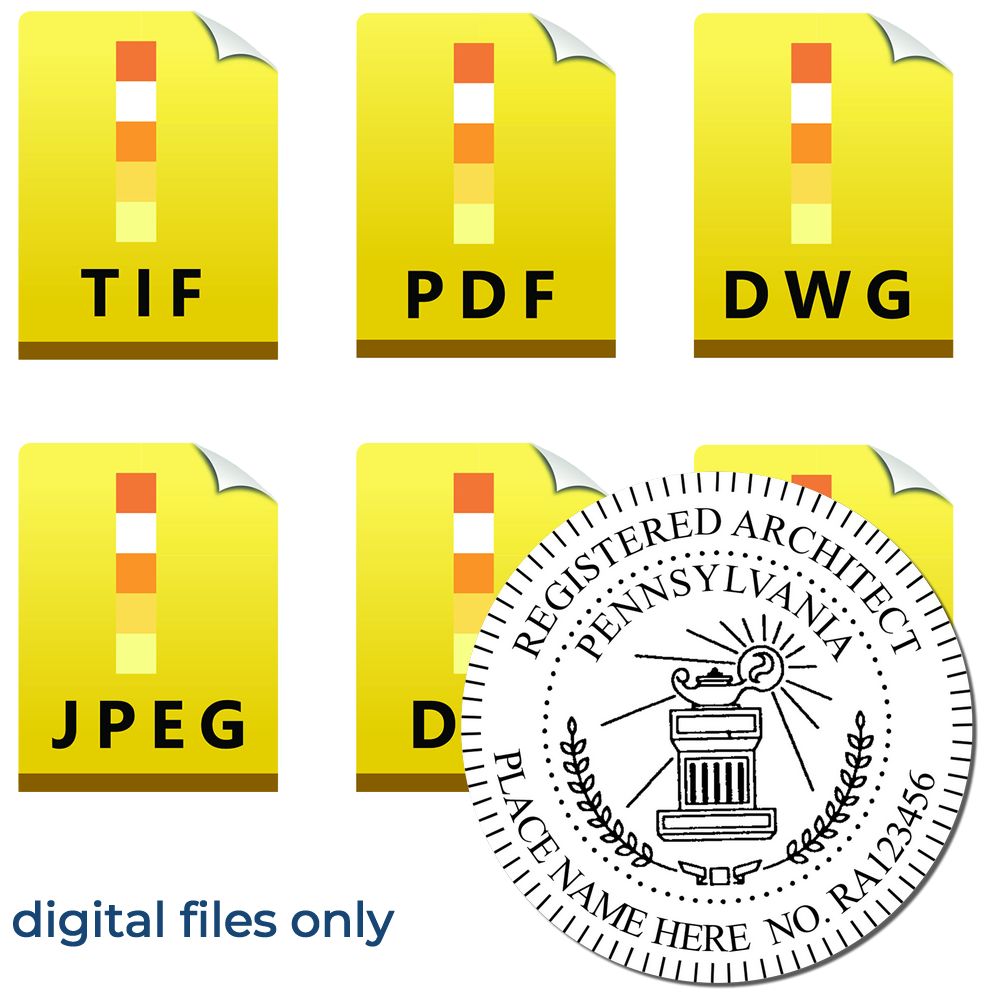
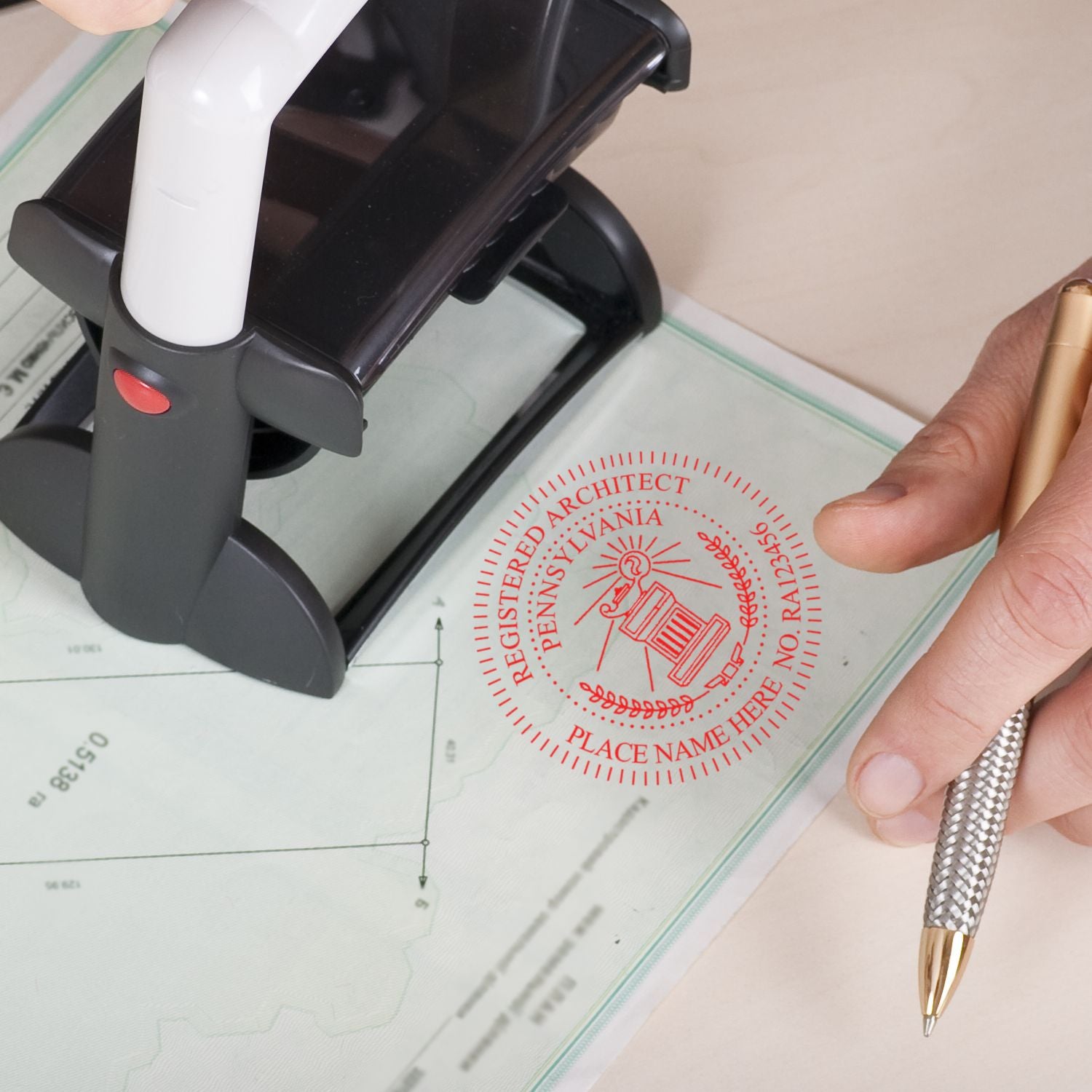 Digital Pennsylvania Architect Stamp, Electronic Seal for Pennsylvania Architect3008ARC-PASale price$20.00 Regular price$25.00Save 15%
Digital Pennsylvania Architect Stamp, Electronic Seal for Pennsylvania Architect3008ARC-PASale price$20.00 Regular price$25.00Save 15%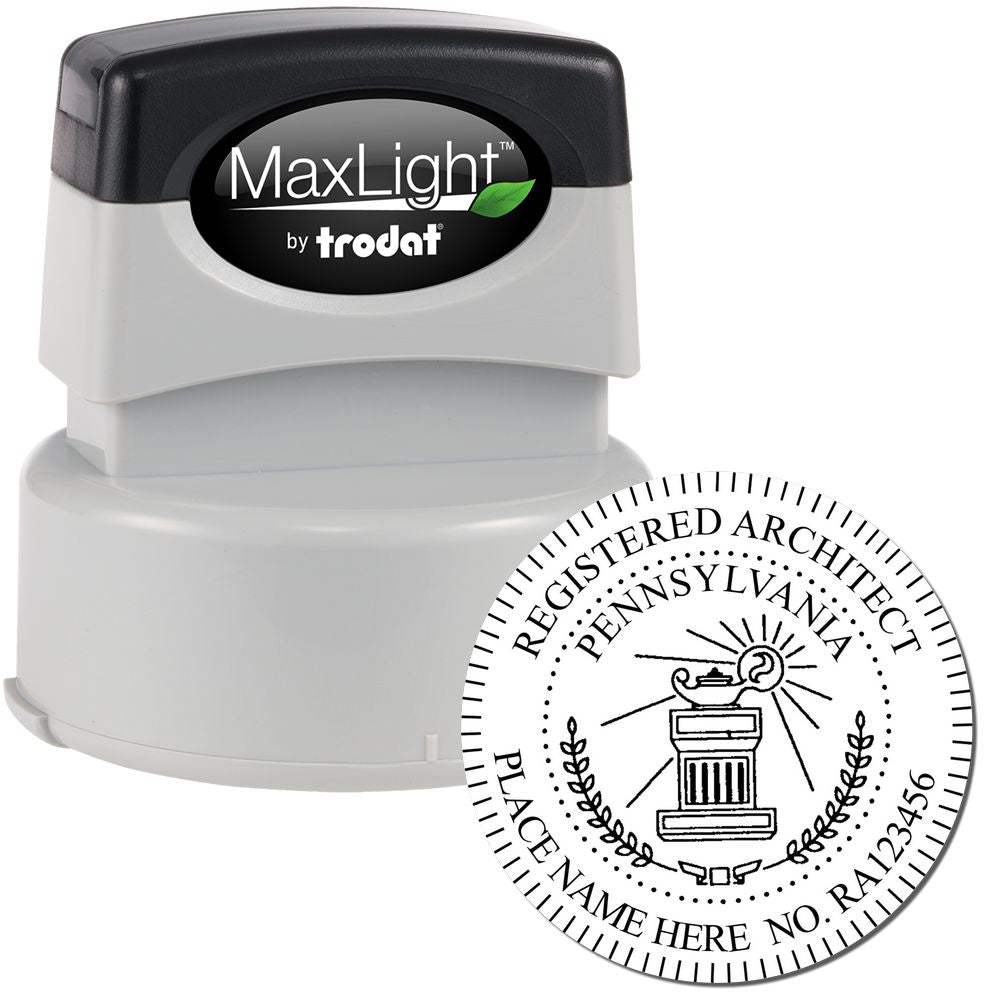
 Premium MaxLight Pre-Inked Pennsylvania Architectural Stamp3021ARC-PASale price$46.95 Regular price$55.00
Premium MaxLight Pre-Inked Pennsylvania Architectural Stamp3021ARC-PASale price$46.95 Regular price$55.00
It's essential for architects to familiarize themselves with the specific design requirements outlined by the Pennsylvania State Board of Architects. For detailed information on Pennsylvania architect seal requirements, please refer to our article on pennsylvania architect seal requirements.
Importance of Accurate and Legible Seal Imprints
Accurate and legible seal imprints are crucial to ensure the integrity and credibility of architectural documents. When affixing the Pennsylvania architect seal to drawings, plans, or other official documents, architects must pay attention to the following:
-
Clarity and Legibility: The seal imprint should be clear and legible, allowing for easy identification of the architect's credentials and license number. Illegible or smudged imprints may lead to rejection of the documents.
-
Placement and Size: The Pennsylvania architect seal should be placed in a prominent position on the document, typically near the architect's signature or on the title page. The size of the seal should adhere to state regulations and be clearly visible without overshadowing other important information.
-
Color and Contrast: The seal imprint should have sufficient color contrast with the background of the document. This ensures that the seal stands out and can be easily recognized.
By adhering to these guidelines, architects can ensure that their seal imprints are accurate, legible, and compliant with Pennsylvania regulations. For more information on Pennsylvania architect seal design and usage guidelines, please refer to our article on pennsylvania architect stamp guidelines.
The Pennsylvania architect seal plays a vital role in establishing professionalism, credibility, and compliance within the architectural profession. Architects must carefully consider the design elements of their seal and ensure accurate and legible imprints to maintain the integrity of their work and meet state requirements.
Professionalism and Credibility
As a professional architect in Pennsylvania, it is crucial to establish a strong sense of professional identity and demonstrate your compliance with regulations. One way to achieve this is by utilizing a Pennsylvania architect seal.
Establishing Professional Identity
The Pennsylvania architect seal serves as a visual representation of your professional identity. It signifies that you are a licensed architect recognized by the state of Pennsylvania. By affixing the seal to your architectural drawings, plans, and other documents, you communicate your expertise and commitment to quality to clients, contractors, and regulatory authorities.
The architect seal includes essential information such as your name, license number, and the words "Registered Architect." This unique combination of information helps to distinguish your work from others and reinforces your professional status. It is important to ensure that the seal imprint is accurate and legible, as it reflects your professionalism and attention to detail.
Demonstrating Compliance with Regulations
In addition to establishing your professional identity, the Pennsylvania architect seal also demonstrates your compliance with the regulations set forth by the Pennsylvania State Architects Licensure Board. This regulatory body oversees the practice of architecture in the state and requires licensed architects to use a seal on certain documents.
By affixing the architect seal to your drawings and plans, you indicate that your work meets the necessary standards and has been reviewed and approved by a licensed professional. This not only assures clients and stakeholders that your work is in compliance with the applicable building codes and regulations but also helps to protect public safety.
To ensure that you meet all the requirements for using the Pennsylvania architect seal, it is important to familiarize yourself with the specific regulations outlined by the Pennsylvania State Architects Licensure Board. You can find more information on the requirements for the Pennsylvania architect seal in our article on Pennsylvania architect seal requirements.


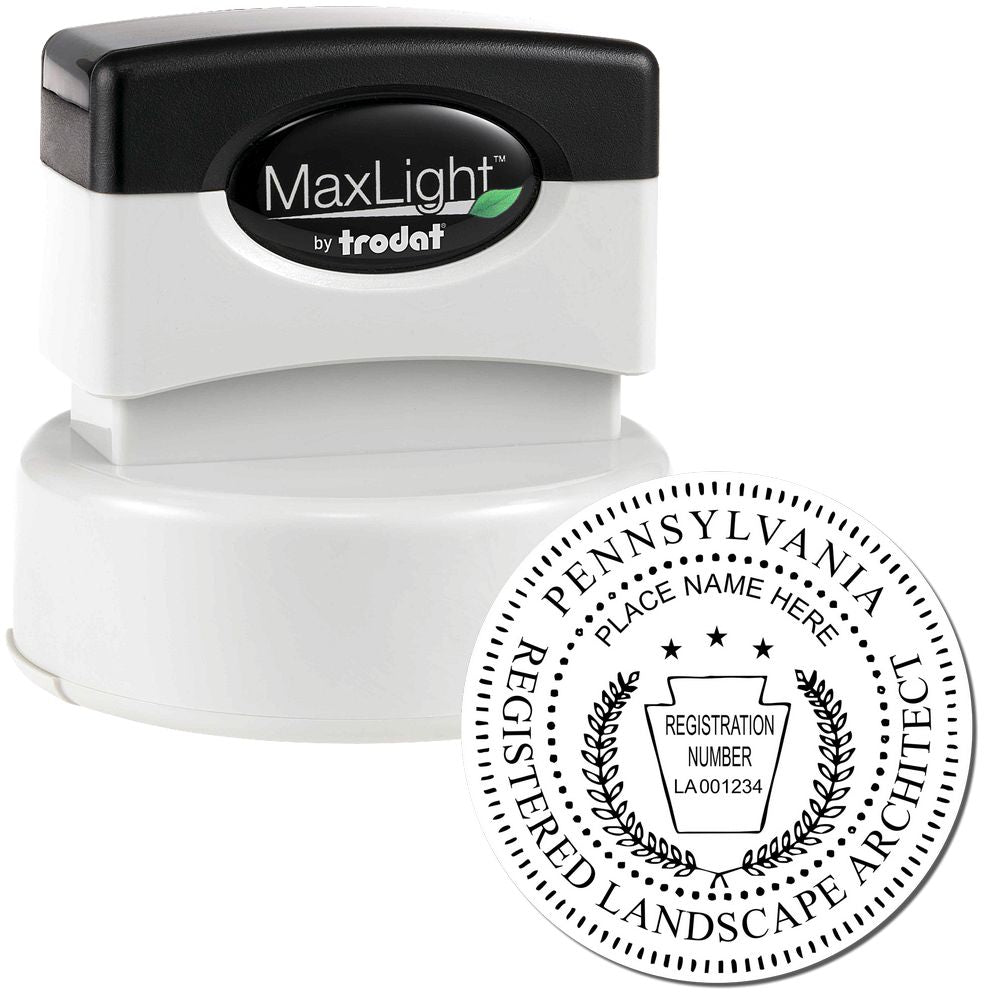
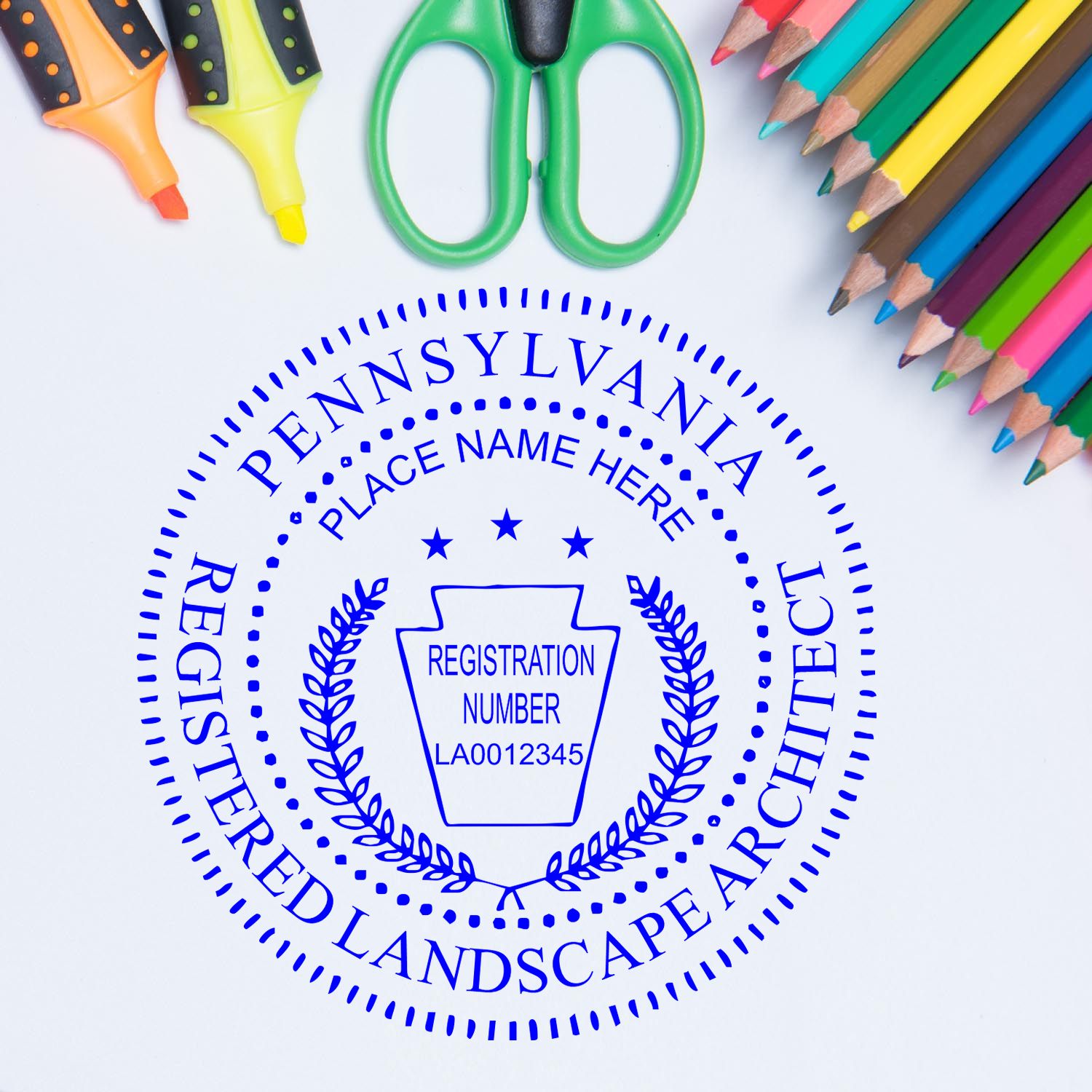
By utilizing a Pennsylvania architect seal, you establish your professional identity and demonstrate your compliance with the regulations governing the practice of architecture in the state. This not only adds credibility to your work but also instills confidence in your clients and colleagues. Remember to follow the guidelines for using the seal and maintain its integrity to ensure its effectiveness. For more detailed guidelines, refer to our article on Pennsylvania architect stamp guidelines.
Obtaining a Pennsylvania Architect Seal
To unleash your professionalism as an architect in Pennsylvania, obtaining an architect seal is a crucial step. This seal serves as a visual representation of your authority and expertise, signifying that your work has met the necessary standards and complies with the state regulations. In this section, we will explore where to purchase a Pennsylvania architect seal and the factors to consider when choosing a seal provider.
Where to Purchase a Pennsylvania Architect Seal
When it comes to purchasing a Pennsylvania architect seal, it's important to choose a reputable and reliable provider. There are various options available, both online and offline, that offer architect seals. It is recommended to choose a provider that specializes in producing architect seals, as they will have the expertise and knowledge to meet the specific requirements of Pennsylvania. You can explore websites that cater to architects and engineers, as they often have a wide selection of architect seals to choose from. Additionally, local office supply stores may also carry architect seals or have the ability to order them for you.
Before making a purchase, it's essential to verify that the provider complies with the Pennsylvania architect seal requirements. This includes ensuring that the seals meet the size and design specifications as outlined by the Pennsylvania State Board of Architects. For more detailed information on the requirements, you can refer to our article on pennsylvania architect seal requirements.
Factors to Consider When Choosing a Seal Provider
When selecting a provider for your Pennsylvania architect seal, there are several factors to consider to ensure you make the right choice:
-
Quality: Look for a provider that offers high-quality seals made from durable materials. The seal should be able to withstand frequent use without losing legibility or integrity.
-
Customizability: Consider whether the provider offers customization options for the seal design. Customizing the seal with your name, license number, and other relevant information can add a professional touch to your documents.
-
Customer Reviews: Read reviews and testimonials from other architects who have purchased seals from the provider. This can provide insights into the quality of their products and customer service.
-
Price: Compare prices among different providers to ensure you are getting a fair and competitive deal. However, keep in mind that quality should not be compromised for the sake of a lower price.
-
Turnaround Time: Consider the provider's turnaround time for processing orders and delivering the seals. Timely delivery is important, especially if you have looming project deadlines.
-
Customer Support: Evaluate the provider's customer support services. Ensure they are responsive and can address any questions or concerns you may have.
By carefully considering these factors, you can choose a reputable seal provider that meets your specific needs as a Pennsylvania architect. Remember to always prioritize quality and compliance with the Pennsylvania architect stamp requirements to ensure the legitimacy and professionalism of your work. For more information on the design and guidelines for using the Pennsylvania architect seal, refer to our articles on pennsylvania architect stamp design and pennsylvania architect stamp guidelines.
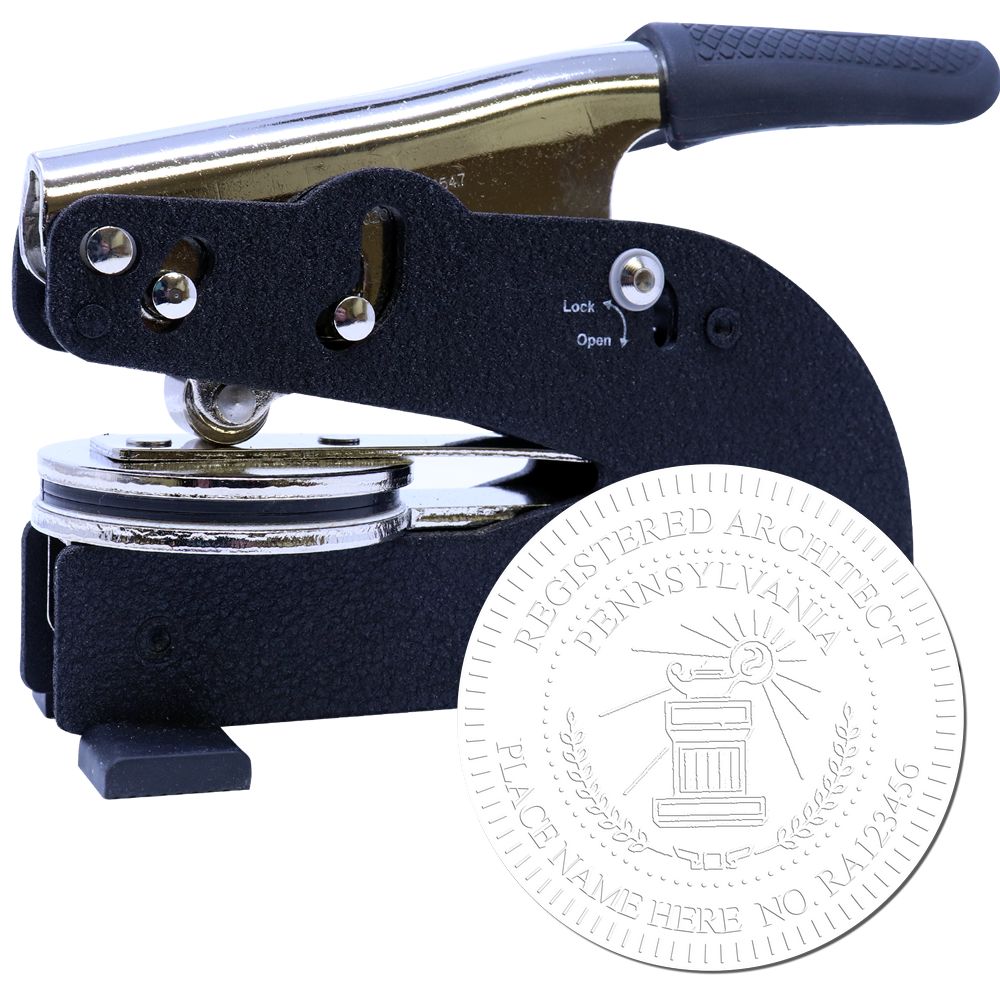

Proper Usage and Maintenance
To ensure the integrity and effectiveness of the Pennsylvania Architect Seal, it is essential to understand the guidelines for its proper usage and maintenance. Adhering to these guidelines will help architects maintain professionalism and meet the legal requirements associated with the seal.
Guidelines for Using the Pennsylvania Architect Seal
When using the Pennsylvania Architect Seal, architects should follow these guidelines:
-
Placement: The seal should be placed on all official documents, including drawings, plans, specifications, and reports, that are prepared by the architect. The seal should be positioned in a visible and legible manner, ensuring that it does not obscure any important information.
-
Size and Color: The Pennsylvania Architect Seal must be of a specific size, as prescribed by the state regulations. It should also be displayed in black ink to ensure clarity and consistency.
-
Seal Imprint: The seal imprint should be clear, sharp, and free from any smudges or distortions. It is important to use a high-quality seal to achieve accurate and professional imprints. For information on where to purchase a Pennsylvania Architect Seal, refer to our article on pennsylvania architect seal requirements.
-
Authentication: Each document should be authenticated with the architect's original signature, along with the Pennsylvania Architect Seal. This dual authentication ensures the document's validity and compliance with regulatory requirements.
Tips for Maintaining the Seal's Integrity
To maintain the integrity and longevity of the Pennsylvania Architect Seal, architects should consider the following tips:
-
Storage: Store the seal in a protective case or pouch when it is not in use. This helps prevent damage to the seal's design and ensures that the imprint remains clear and legible.
-
Cleaning: Regularly clean the seal to remove any ink residue or debris that may accumulate. Use a soft, lint-free cloth or a mild cleaning solution specifically designed for seals. Avoid using harsh chemicals or abrasive materials that could damage the seal's surface.
-
Replacement: Over time, the seal may wear out due to repeated use. It is important to periodically inspect the seal for any signs of damage or deterioration. If the seal becomes worn or damaged, it should be promptly replaced to maintain the professional appearance and functionality of the architect's documentation.
By following these guidelines for usage and maintenance, architects can ensure that the Pennsylvania Architect Seal remains a reliable and accurate representation of their professional identity. For more information on Pennsylvania architect seals and stamps, refer to our article on architect stamp pennsylvania.
About ESS
At Engineer Seal Stamps, we are rooted in a commitment to excellence, we specialize in crafting custom rubber stamps and premium professional seals. Our intricate designs are not just mere impressions; they are the emblem of precision, meeting the stringent standards approved by the state board. At ESS, we understand the urgency of today's fast-paced world, which is why we prioritize swift shipping without compromising on the quality and finesse of our products. When you choose ESS, you're not just getting a stamp; you're gaining a reliable partner who values your profession as much as you do. Join the community of professionals who won't settle for anything less than the best—choose ESS.

